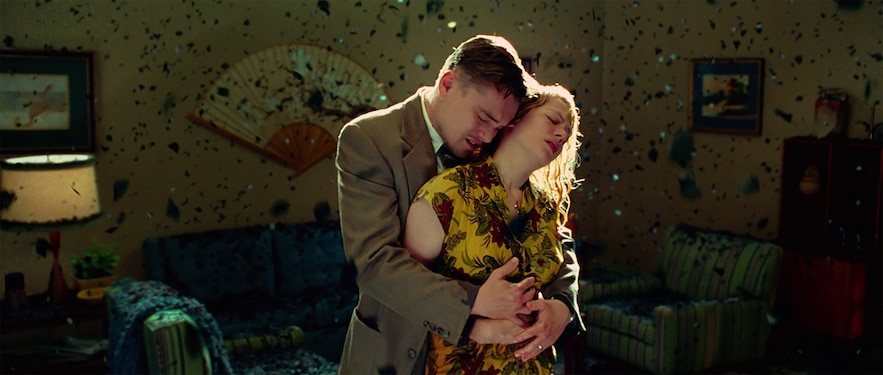A box of tissues, an armchair and a couch – preferably red. The setting is familiar – and almost comforting. From Alfred Hitchcock in No Spring for Marnie to David Cronenberg in A Dangerous Method – without forgetting, either, almost the entirety of Woody Allen’s filmography –, psychoanalysis is an obligatory figure of the big and small screen. To know the intimacy of a character, there is nothing like entering that of a shrink’s office. The imagination mobilized by the filmmakers is often the same: the inevitable couch, the very long silences, the often ambiguous relationship between the analyst and his or her patient.
Inventions of the late 19th century, cinema and psychoanalysis have had intimately linked destinies since their origins. Not without some obstacles: Sigmund Freud refused, in the middle of the nascent cinema period, to assist the filmmaker G. W Pabst on his film The Mysteries of a Soulyet inspired by his theory of the unconscious and repression. Despite repeated calls from the production company, he did not give in to the sirens of Metro Goldwyn Mayer. In vain: despite the reluctance of its creator, cinema has not stopped drawing on Freudian motifs.
Psychoanalysis, with its mysteries and interrogations, lends itself readily to the film noir or detective film format. The masters of the genre were not mistaken. In the 1940s, Alfred Hitchcock launched the fashion with Dr. Ewardes’ Housewhere Constance Petersen, a psychoanalyst, tries to resist (in vain) her feelings for JB, an amnesiac with a troubled past. Other film noirs borrowing from psychoanalysis will follow. In The Double Enigma by Robert Siodmak, released in 1946, the hero, a psychiatrist, discovers the identity of a murderer. The same year, in The Medallion by John Brahm, a millionaire is visited by a psychoanalyst on the eve of his wedding – with bad news about his sweetheart’s past. Much later, Brian De Palma with The Spirit of Cain (1992) or Martin Scorsese with Shutter Island (2010) will also use discipline to reveal their characters’ traumas.
Martin Scorsese’s “Shutter Island,” starring Leonardo di Caprio and Michelle Williams, uses psychoanalysis to reveal a character’s trauma.
© / Paramount Pictures France
In France, this process is also used in films such as The Double Lover by François Ozon, where Jérémie Renier plays a therapist who is as beautiful as he is disturbing. Because if he is the recipient of his patients’ neuroses, the psychoanalyst is also often the object of their desires. He can even be the actor: in A Dangerous MethodCronenberg dissects the tumultuous relationship between Sigmund Freud, Gustav Jung, founder of analytical psychology, and Sabina Spielrein, a patient navigating between the two men.
Of the Soprano has In Therapy
When he steps out of the game, the shrink is also a formidable narrative instrument. What better than his office to understand a hero, dissect his fantasies, and examine his emotions? In the HBO series The Sopranosthe sessions between Tony Soprano, a New Jersey mobster in the midst of a midlife crisis, and Dr. Jennifer Melfi help set the story in motion. Soprano’s psyche is scrutinized, to differentiate his actions from the report he makes of them: reality is regularly much more raw than what the mobster tells us, careful to camouflage his crimes with ellipses revealed through editing. Opposite, Dr. Melfi plays the game, an attentive and scrupulous shrink facing a client determined not to reveal everything to her. The playful process is the salt of the series. It is also very realistic: the American Psychological Association has awarded it several prizes, notably for the quality of the “artistic representation of psychoanalysis and analytical psychotherapy”. As a final compliment, Lorraine Bracco, who plays Dr. Melfi, was even awarded the prize for “the most credible psychoanalyst to have appeared in film or on television”.
In France, the shrink is often more discreet. His presence, more tenuous than that of American professionals, nevertheless remains essential. A recurring motif in Arnaud Desplechin’s films, psychoanalysis is often a backdrop, a way of better understanding the neuroses of the main characters. In At the end of the taleby Jean-Pierre Bacri and Agnès Jaoui, the character of Pierre – played by Bacri – briefly submits to the questions of a professional, reluctant to psychoanalysis. It is only recently, with the success ofIn Therapy – adaptation of the Israeli series BeTipul – that the office becomes a character in its own right in a work of French television. Analysis still has a bright future ahead of it.
.
